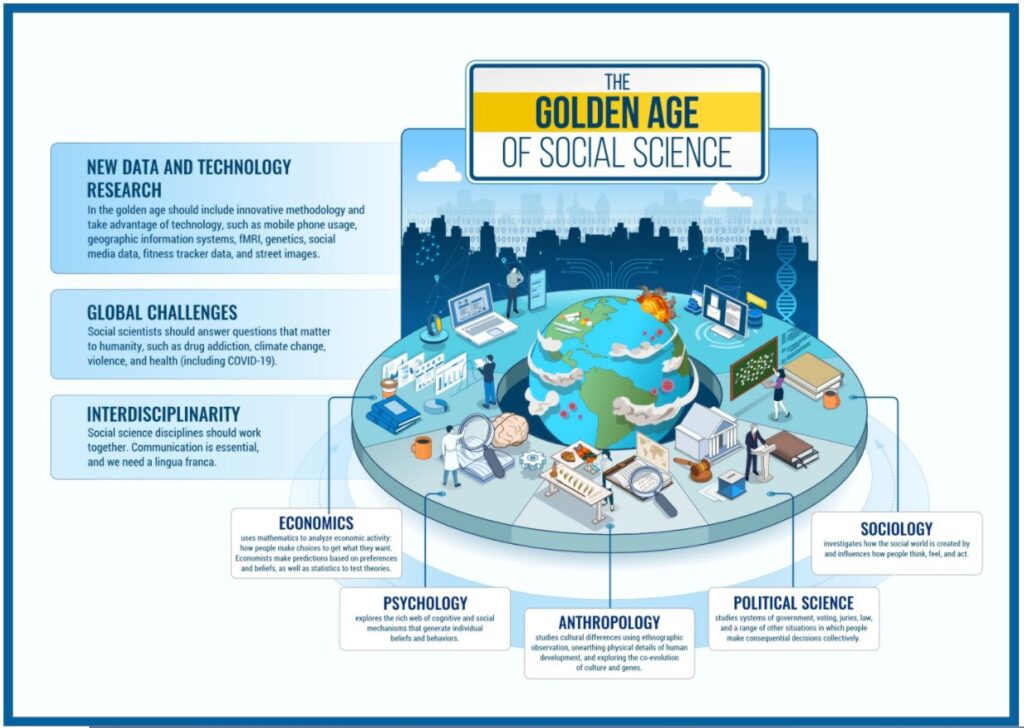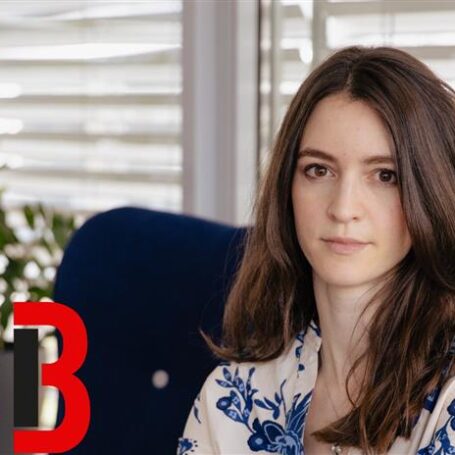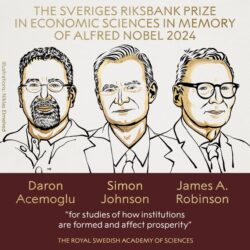Behind the Scenes: ‘The Golden Age of Social Science’

Some of the most challenging problems facing our world, such as the COVID-19 pandemic, require not just one field of expertise but a unified interdisciplinary approach. Or so explains a team of social scientists at the California Institute of Technology in a new report published in the Proceedings of the National Academy of Sciences (PNAS). Likening the report to an op-ed piece, the lead author Anastasia Buyalskaya says that she and her team wanted to call attention to the “golden age of social science,” in which researchers are increasingly turning to new sources of data and interdisciplinary tactics to solve societal problems.
“This is a piece that needed to be written,” says Buyalskaya, a Caltech graduate student who works with Colin Camerer, the Robert Kirby Professor of Behavioral Economics and director of the T&C Chen Center for Social and Decision Neuroscience in the Tianqiao and Chrissy Chen Institute for Neuroscience. Buyalskaya was formerly a vice president of behavioral finance at BlackRock, a multinational investment management company, before deciding to pursue her PhD in social and decision neuroscience at Caltech.

“We wanted to call attention to what we view as an incredibly exciting time to be doing research in social science, and discuss what steps need to be taken to ensure it flourishes,” she says.
In the report, the authors explain that COVID-19 and other infectious diseases are problems where interdisciplinary approaches are crucial. “These are issues of biology, sociology, economics, public health, and even math,” says Camerer. The report also outlines additional examples, such as the more nascent fields of behavioral economics and social networks, where interdisciplinary collaborations have led to findings that could not have been possible without the collective power of multiple areas of expertise. The paper explains that, while these interdisciplinary efforts have become more common in recent years, along with an increase in data sharing among scientists, there are still obstacles left to conquer in this “golden” era.
We sat down with Buyalskaya and Camerer over Zoom to discuss the golden age of social science, its challenges, and how they see the future of social science unfolding.
What gave you the idea to write this paper?
Anastasia: The idea for this paper had been bubbling under the surface for a long time. The summer after my first year, I came to Colin and said I wanted to write a paper like this, and he said that he had been wanting to write a paper with the title “The Golden Age of Social Science” for a while.
The problems facing our world have become more complex. Researchers across multiple fields might all be working on the same question, but not communicating with one another. In the paper, we discuss the various disciplines which make up the social sciences: the fields of economics, psychology, anthropology, political science, and sociology. The current COVID-19 pandemic is an example of where all of these fields have come into play. It was an explosive shock that forced each field to contribute their tools and perspectives.
True to the name of our paper, we argue that social science is entering a golden age, marked by the confluence of explosive growth in new data and analytic methods, interdisciplinary approaches, and a recognition that these ingredients are necessary to solve the more challenging problems.
Colin: People might think of pandemics and infectious diseases, such as HIV, as medical problems but there are so many other areas of expertise needed. If Joe Biden calls somebody up about the pandemic and says, “What are we going to do?” then the answer is not more syringes. There is an element of psychology; for example, consider mask wearing. Asian countries that have already dealt with other epidemics wear masks with nearly 100 percent compliance, much more so than people do here in the U.S. There are even philosophical questions of social values, such as the question of whether prisoners in jail should be prioritized to get the vaccine.
Can you tell me more about how big data play a role in this golden age?
Anastasia: There are a lot more data on human behavior today, significantly more than we had even a dozen years ago. A lot of it is collected by companies, many of whom are happy to partner with researchers at Caltech because they may not have the behavioral science expertise to know what to look for in their data sets. At the same time, in the lab, we have new ways of measuring things about mechanism: we can measure gaze and attention using eye tracking and mouse tracking, and human brain activity using fMRI [functional magnetic resonance imaging] and EEG [electroencephalogram]. Computing power is also getting better and better, and it’s relatively easy to ingest and analyze huge amounts of data today.
Colin: One of the through lines about the golden age is that it’s not just about the existence of more data but the rate at which data are being acquired and the willingness to share. Government agencies and many companies are starting to share their data. Companies might be doing testing to see how customers behave and use their products and accumulate a lot of useful data. For example, we have a relationship now with a gym chain that is sharing its customer data with us and our partners at UPenn to use in experiments about health and fitness. The gym tried different text messages and incentives to get people to go to the gym more, so we are using their data, and machine-learning tools, to try to predict when people go to the gym.
Anastasia: The company data are incredibly useful, because unlike chemistry where a molecular reaction is largely the same inside and outside the laboratory environment, humans are not. In the lab, the range of human behaviors that we can study is constrained. So having both sets of data, from inside and outside of the lab, is important.
What are the challenges that come up in this golden era?
Colin: Traditional research can take place in silos, where there is a sort of tribalism surrounding specific disciplines. Some researchers might feel that economists should just do economics. Also, there is still an expectation in social science fields that researchers should have a solo-authored paper, but we are hoping that this attitude starts to shift away to more collaborative work. How people discuss topics between fields could also use improvements. We feel that a “lingua franca” or common language among disciplines can encourage collaborations.
Anastasia: Journals are sometimes less willing to publish interdisciplinary findings, so we would like to encourage journals to seriously consider and publish this kind of research even when it falls outside of their traditional disciplines. We also think that universities will need to adjust their hiring and promotion practices to value contributions from large teams.
What do you hope people will take away from this paper?
Anastasia: We hope our perspective will encourage scientists to take advantage of new data sets and form diverse collaborations to answer pressing questions. We also direct these ideas to funding agencies and academic institutions, to convince them to provide more funding for this type of work. Ultimately, we wish to see an acceleration in interdisciplinary social science research that addresses real-life challenges. The COVID-19 pandemic has illustrated how large-scale complex problems will only be solved by many scientists contributing what they know best.
Colin: We would be very happy if a lot of junior people who would like to do this type of research were able to use our paper to either get funding or talk their provost into funding their research. Having a paper in PNAS on this topic lends it credibility.
Is there anything else you would like to add?
Anastasia: Colin himself is the perfect example of what we are talking about in this paper. He has a PhD in decision theory and an MBA in finance, and then worked as an economist and ultimately a behavioral economist. He is based in the Division of the Humanities and Social Sciences at Caltech and is also affiliated with the Computation and Neural Systems program at Caltech [organized jointly by the Division of Biology and Biological Engineering and the Division of Physics, Mathematics and Astronomy]. So he has been able to work across fields, which is amazing and which is rare. At the moment, Caltech is one of the few places where you can do that, but we hope that more institutions follow along and recognize that this is a growing space.




















































































